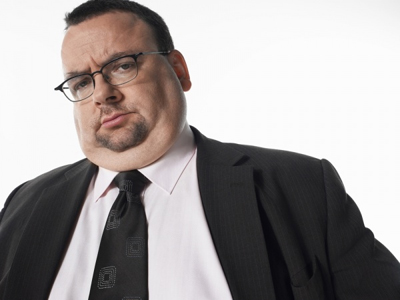 Here are some exercises you can do to banish the extra flab under your chin
Here are some exercises you can do to banish the extra flab under your chin
Double chin is common among overweight men and women. And if you are sporting one too, you certainly know how unflattering it is. And alternate names like turkey neck, chin twin, second chin, etc. just proves the point. However, getting rid of a double chin is not that easy and one has to religiously do exercises for the neck and chin to make the extra flab disappear.
Sadly, women are more prone to it
It's not like women have a shortage of body issues that they needed one more added to their list. Since women have a tendency to accumulate fat deposits in the body, they are more prone to having a double chin, says fitness expert Leena Mogre.
Reduce overall body fat
When a person is fat, there is accumulation of fat everywhere on the body and hence, as a result occurs a double chin. "Spot reduction is a myth. You can't get rid of double chin with certain neck and chin exercises alone. One has to reduce fat percentage overall. Double chin exercises will work only when coupled with diet and weight training," explains Mogre. Sometimes, people can get a double chin due to hereditary reasons and in such cases they could opt for a cosmetic procedures to get rid of it, she adds.
What you can do...
Fitness expert Samir Purohit, too, says that there no specific exercises in Pilates for a double chin and reducing overall body fat will help instead. He shares two exercises:
Platysma exercise
In this exercise, you open the mouth as wide as possible, then stretch the lower lip and jaw over your top row of teeth. This will tighten the area around the chin and help you lose a double chin. Repeat five to 10 times.
Chin lift
Another exercise is the Chin Lift, as it stretches and tones the various muscles of the face eg. the jaw and neck. Sit erect and tilt your head back until you are looking toward the ceiling. Lips should be pursed tightly, as if you wanted to kiss the ceiling. Just use your lips, do not engage facial muscles. Hold your lips for a five seconds and then release. Repeat five to 10 times.
Other exercises:
Neck roll
Sit straight and inhale while turning the head to one side such that the chin touches the shoulder. Now exhale and slowly lower the head such that the chin is resting on the chest. Inhale again and gently lift your head to the other side where the chin touches the other shoulder. Repeat 5 to 10 times.
Chin slap
Using the back of your hand, slap gently underneath your chin. Whilst gently slapping, gradually build up speed. Do this for a couple of minutes, 2-3 times a day.





Comments
Nice post. I was checking constantly this blog and I am impressed!
Extremely useful information specially the last
part :) I care for such info a lot. I was seeking this particular information for a long time.
Thank you and good luck.
Also visit my webpage - hyper fx supplements: http://bestsupplementsformuscle.pw
Add new comment